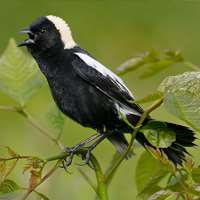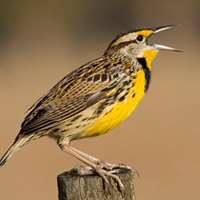Bobolink and Eastern Meadowlark populations are declining
By Diego Flammini
Assistant Editor, North American Content
Farms.com
The Ontario Soil and Crop Improvement Association (OSCIA) is teaming up with producers and researchers to help record bird sightings of two species at risk.
GrassLander, a free web-based mapping platform, allows farmers to map and track sightings of Bobolink and Eastern Meadowlark, two grassland birds native to Ontario. Farmers can also use the platform to input their field management practices throughout the season.
The Bobolink and Eastern Meadowlark have experienced annual population declines of about 4 per cent and 2.9 per cent, respectively, over a 10-year period, according to a 2016 report from the Ontario Ministry of Natural Resources and Forestry.
Ontario producers understand the types of wildlife that exist in their fields, which is why their help in this initiative is important.
“Our membership is out there in the fields and they know first-hand what wildlife is living on the farm landscape,” Andréa Dubé-Goss, OSCIA environmental program manager, said in a June 15 release. “This is our chance to better inform the scientific community and policy makers about the intersection of farming and species at risk.”


L to R: Bobolink and Eastern Meadowlark
Photo: Ontario.ca.
Bobolinks and Eastern Meadowlarks are usually found between Windsor and Ottawa. Eastern Meadowlarks are also found near Georgian Bay and Lake Huron.
Hay mowing during the breeding period (May to July) could kill and disturb nesting adult Bobolinks. Cutting hay in early to mid-July could harm young birds that are unable to fly.
Over-grazing of pasturelands by livestock and grassland fragmentation are considered threats to Eastern Meadowlarks.
The Ministry of Natural Resources added Bobolinks to the Species at Risk in Ontario List in September 2010. Eastern Meadowlarks were added to the list in January 2012.